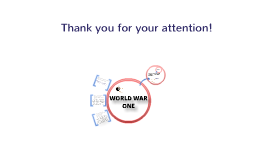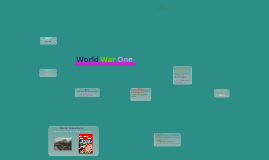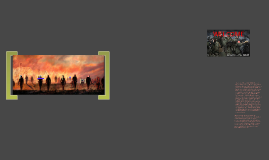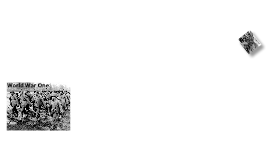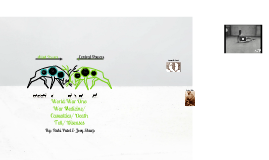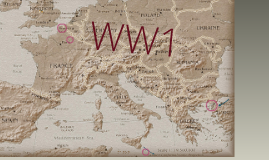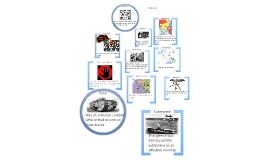WAR WORLD ONE!
Transcript: The source is from the perspective of a German Military photographer documenting the war. The heavy artillery was called the Big Bertha, the name came from one of the Allied forces to describe the heavy German artillery piece Howitzer. AFC, France, November 1917 http://www.kenthistoryforum.co.uk/index.php?topic=6042.0 British Vickers machine gun crew wearing PH-type anti-gas helmets. This photograph was taken after the conclusion of the battle in December 1917 at the railway marshaling yard at Cambria. If you surrender Verdun, you will be cowards! And you needn’t wait til then to hand in your resignation. If you abandon Verdun, I sack you all on the spot.”- prime Minister Briand. WELCOME The source is from the perspective of a French photographer documenting the battle. The imply of new weapon like Flamethrowers and phosgene gas, had a big impact on the soldiers. These soldiers were already trying to fight muddy and wet conditions and shellfire.http://www.wereldoorlog1418.nl/battleverdun/slachtoffers.htm British troops leave their trenchesBattle of the Somme, July 1, 1916 WAR WORLD ONE V Day, 25 June 1916Much brighter and warmer dayhttp://www.1914-1918.net/bat15C.htm MUSEUM Today, we will be having soldiers who fought in war talking about the type of weapons they used and tactics/strategies they used. Although. Another key factor behind the stalemate on the Western front was the fact that during the First World War, there emerged newer weapons like machine guns. In brief but accurate terms, it can be said that the race to the sea was a series of battles in which the Germans on the one hand, and the Allies on the other, tried to outflank each other through a series failed military manouevres. TO THE SOMME 1916:The British had two reasons why they decided to launch the Somme Offensive. 1. The wanted to relieve the pressure on the French at Verdun.2. The British new commander in chief, Sir Douglas Haig, had great faith in the Offensive, and believed that it was necessary.99. They wanted to drive though the German lines into the open country. They also hoped to push the north and south behind the Germans off their supply lines, rolling up the German line, and get the Germans to surrender. Webb, K. World War 1 – From Sarajevo to Versailles 2002. McGraw-Hill Publications.This source is from the perspective of a member of the allied forces. This is what the Prime Minister said to the French Soldiers. This is one of the reasons why French soldiers didn’t give up on Verdun. PASSCHENDAELE: The main reason for the battle of Passchendaele was to break the German line and to capture the two ports of Ostend and Zeebrugge. They Germans used them as U boats bases. The Germans were using them as safe ports from which to run its unrestricted submarine warfare campaign against Britain. The Germans were using their U boats to sinking quarter of all supply’s, which traveled by ships. The introduction of the convoy system for merchant shipping reduced losses significantly, but Haig still believed that capture of the Belgian ports would still provide an important breakthrough. 31 July – 6 November 1917 http://en.wikipedia.org/wiki/Battle_of_Passchendaele Verdun!On 21 February 1916, the Germans launched an offensive on the French town of Verdun. The main reason why the Germans attacked Verdun was: because Verdun was symbol as French honour, to prevent they Allied from attacking German’s positions on the Somme and the third point is, because Germany wanted to prepare the way for the attack on the main city of French, which is Paris. Germany believed that if the attacked were successful, it would be a lot simpler to defeat France. Then German will have the opportunity to turn and quickly defeat Russia on the Eastern Front. Since none of the countries fighting the war proved able to score a swift and decisive victory, the First World War, which began in 1914, did not come to an end until the latter part of 1918. The first key reason for the stalemate on the Western front was due to the German war plan and the way it unfolded on the battle field. The German war plan was known as the “Schlieffen Plan.” According to the Schlieffen Plan, the German army was expected to wage a rapid war to defeat the French army within a relatively short time, hopefully within a period of six weeks. The stalemate began when it became clear that the German plan was unable to achieve the quick military victory initially anticipated by Germany’s General Staff. The German military commander who implemented the Schlieffen plan, Helmuth Von Moltke, slightly changed the original plan by attacking Belgium and consequently fighting a war on two fronts Unrestricted Submarine (U-Boat) Warfare Lusitania, May 7th 1915






